Introduction
Recent developments in the use of clinical information systems in heath care has brought about the emergence and increase in use of healthcare systems such as Electronic Medical Records (EMR), Computerized Physician Order Entry (CPOE), and Electronic Medical Record (EMR)among others (Brusco, 2011).
Health care advocates and the federal government have enthusiastically promoted the use of electronic health records (EHR) systems and Health Information Technology (HIT) to improve and transform provision of healthcare services. However, the use of information health system has significant and novel risk.
As such, laws, regulations and standards such as the Health Insurance Portability and Accountability (HIPAA) have been formulated to regulate, improve and control their use.
It has raised concern from analysts and patients on privacy and security of stored electronic information, legal issues as well as legal interoperability.
This essay explores the impacts that federal laws and regulations have on the use of clinical information systems by healthcare givers.
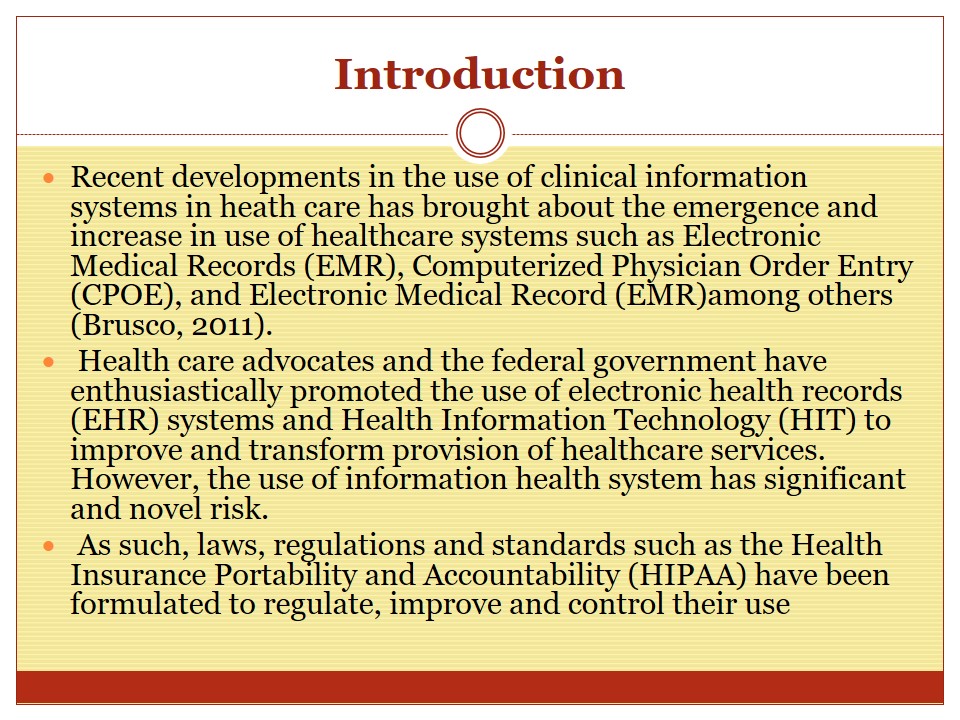
Clinical information systems
Today, the demand for quality health care system and the cost required to provide excellent services to communities has increased.
Due to this, increasing safety medical care, improving efficiency and quality as well as lowering spending on healthcare services has drawn a burgeoning attention towards health information technology (HIT) potentials (Brusco, 2011).
The broad arrays of technologies provided by HIT have been important since they involve electronic means of sharing and managing patients’ information.
As indicated, clinical information systems are embedded in CPOE and EHR among other systems.
Due to their advanced features, clinical information systems interoperate with decision support systems in clinics to electronically up-date data that previously was manually generated by clinicians, to an electronic health record.
CPOE systems have been effectively used in clinics to automatically link order-entry systems to CDSS and patient health records on preventive care, follow-up treatment, drug administration and other services with an aim of providing evidence-based recommendations (Brusco, 2011).
Today, most clinics link their administrative systems with electronic health record systems for purposes of intensively screening and automatically updating data from patients with health risks of adverse drug reactions, latent tuberculosis infections, deep vein thrombosis and diabetes mellitus.
This system has been invaluable and significant in treating unconscious and economically disadvantaged patients who due to their state cannot understand or recall their medical histories (Nicholson, 2011).
Besides, health information systems aid in improving treatment decisions and quality of care through its support features that reduce errors.
It promotes responsible, timely and accurate care through linking medical literature and incorporating prompts and reminders.
It is in HIT that health information system (HIS) is found. The latter enables managing and supporting records of patients via an electronic health record system (EHR), computerized provider entry system (CPOE) and clinical decision support system (CDSS) (Nicholson, 2011).
EHR is being used by healthcare providers to facilitate access of medical records of patients to obtain their drug lists and medical histories.
As indicated, clinical information systems interoperate with decision support systems in clinics to electronically up-date data that previously was manually generated by clinicians, to an electronic health record.
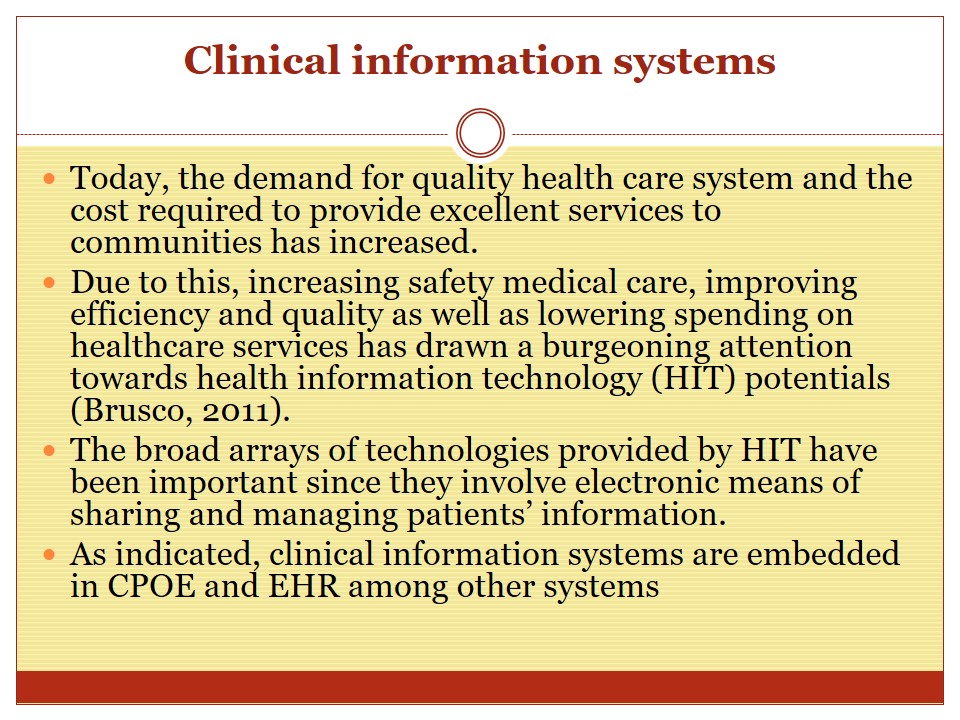

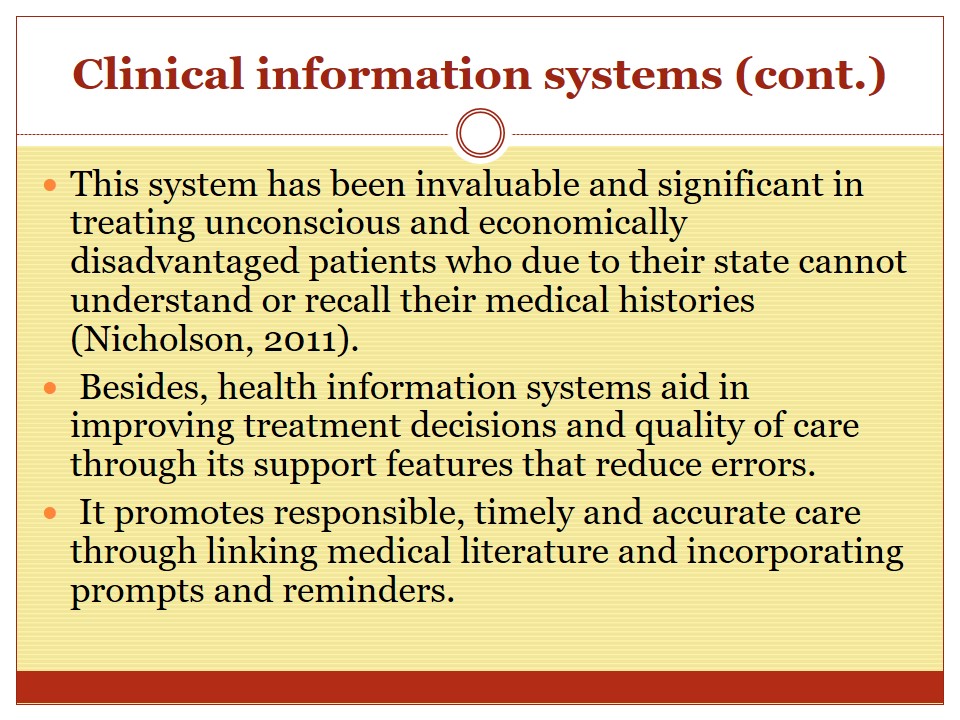
Legal implications
Research studies indicates that the adoption of health information systems may generate errors which can significantly harm patients (Mir, 2011).
It is imperative to note that health information system (HIS) errors may come from human interface difficulties that result from failure of machine rules to reflect expected provider behavior or work organization (Nicholson, 2011).
Besides, it can come from failure of HIS to fully integrate other hospital systems.
For instance, such errors can lead to loss of orders due to maintenance shutdowns and computer crashes.
Research studies have indicated that due to the interoperable national health information network (NHIN), patients information can be transmitted illicitly and be accessed by anyone from anywhere across the globe without detection and cheaply (Nicholson, 2011).
The frequency with which the HIS can be compromised is alarming.
It is against this background that the Health Insurance Portability and Accountability (HIPAA), HIPAA Security Rule and the Privacy Rule were promulgated by the department of health and human services (HHS) in the US to regulate and curb shortcomings.
To determine the impacts of emerging healthcare technologies on laws and regulations, it is important to note that it may prove difficult to establish whether the harm caused on a patient is due to healthcare technologies.
For instance, a patient harmed to due security or malfunction vulnerability of healthcare technologies may be unable to prove his or her claim that it is the system unless there are recorded actions, inputs and outputs by users that the system generated and that an expert can easily understand.
Discovery issues required by law to solve the problems might be copious.
Some litigation questions such as whether printouts from the health information system accurately reflects the activities of providers or not as well as whether system inflexibilities, fragmented physician shortcuts and screen displays distorts and impedes medical record or not arises.
As already mentioned, recent developments in the use of clinical information systems in heath care has brought about the emergence and increase in use of healthcare systems such as an Electronic Medical Records (EMR), Computerized Physician Order Entry (CPOE), and Electronic Medical Record (EMR)among others (Brusco, 2011).
These systems have not only improved health care service provision, but have also given room to violation of patients’ privacy and presented diverse security risks.
This is seen by the way (NHIN) allow user of internet to view patients’ materials without express permission from healthcare providers.
It is imperative to note that besides security risks posed by HIS, medical research studies have pointed out that it may generate to loss of health of patients and even potential death (Mir, 2011).
As such, HIPAA Privacy Standard laws emphasizes on patient information confidentiality, privacy and data integrity.
The safety of patients against harm is provided for by the Common Rule while their health information, protection of its disclosure as well as accountability for using it is guaranteed by HIPAA Privacy Standard.
HIPAA has ensured that identifiable health information, especially electronic information with medical and billing records are protected.
As such, to curb the shortcomings of healthcare technologies and protect the privacy of patients, HIPAA has been successful in granting patients rights to ameliorate their health records and obtain their copies (Mir, 2011).
It is imperative to note that in litigation, it may be difficult to determine whether the information derived from the information system will be chronologically, comprehensively and accurately organized or the files will be incomplete, confusing and disjointed.
Besides errors, analysts and patients have expressed great concern about their privacy and vulnerability to security breaches.
This can be through deliberate misuse of accessed information by internet users, inadvertent disclosures, hacking and sale of computers that have hard drives containing patients’ data.
Besides, experts may find it extremely challenging to perform the task of inspecting program code of an entire health information system to determine the defect that resulted to harm caused to a patient (Nicholson, 2011).
On the other hand, laws and regulations impacts on emerging healthcare technologies through ensuring that medical practitioners become responsible when they are using health information systems (HIS).
Research studies indicated the problem is due to lack of strict regulation on access and use of materials. This may be due to the fact that most governments and healthcare management teams are slow in taking prompt actions.
As such, HIPAA controls access and use of medical data in addition to how a valid research should be conducted. It calls for the institution of a review board tackling privacy before any research project is began to prove oversight (Mir, 2011).
Moreover, it has managed the privacy and security of patients by emphasizing on the protection of patients health information (PHI) via consent from patients before any healthcare operation is done on them and through disclosure of limited and necessary PHI for treatment purposes.
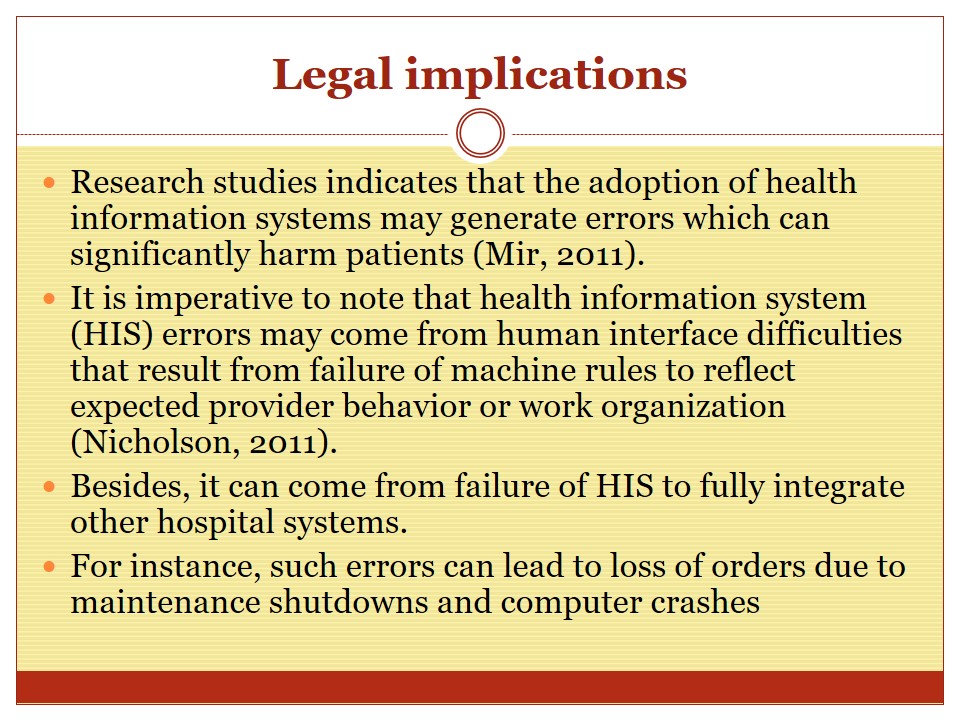
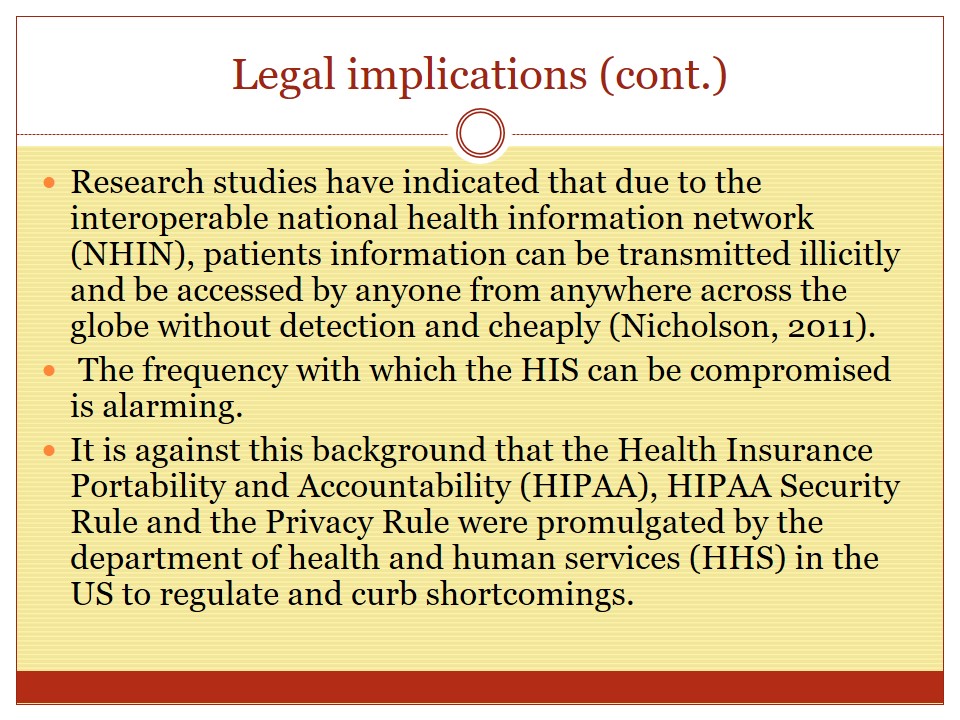
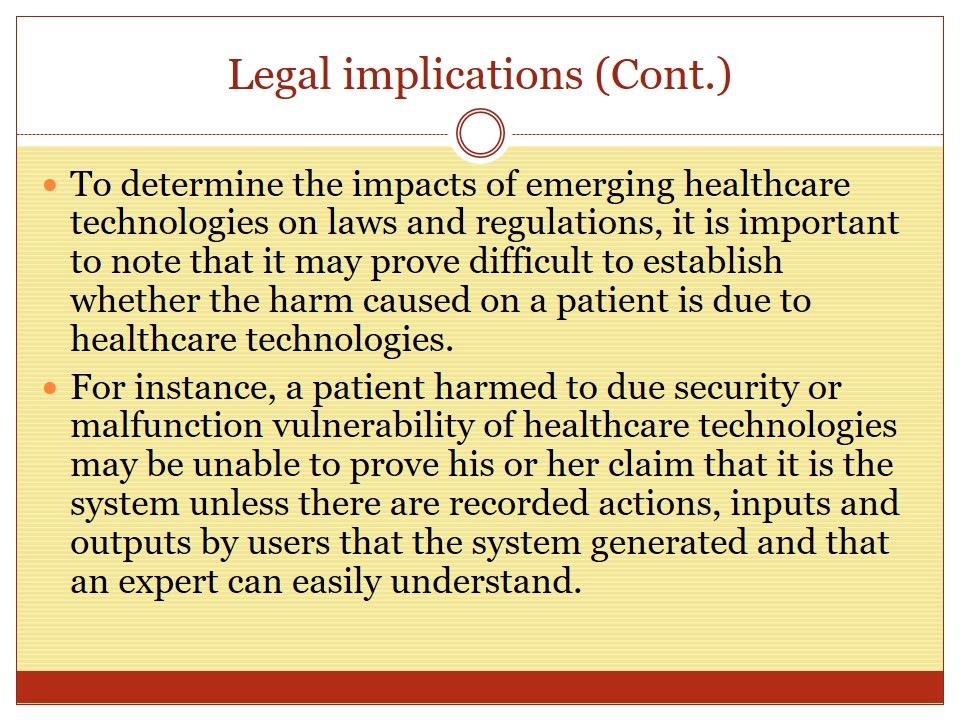
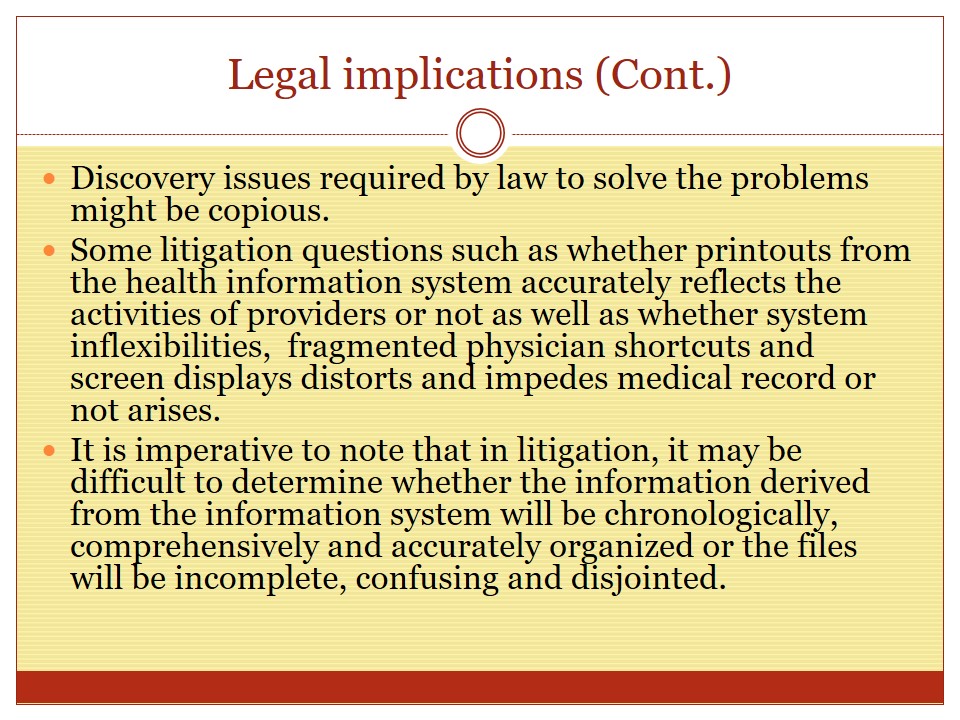
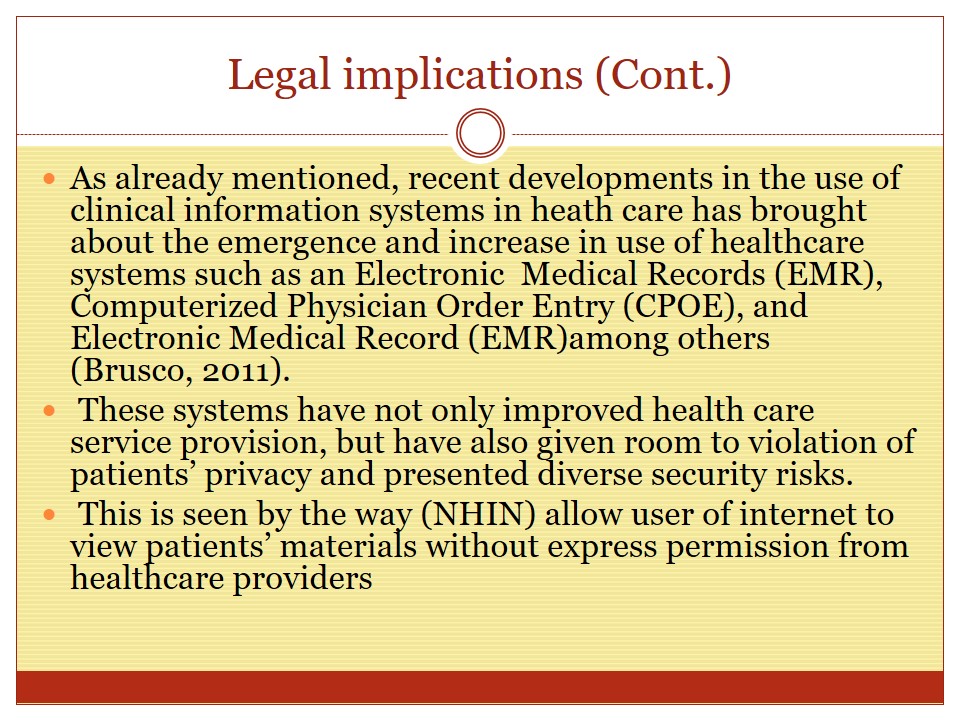

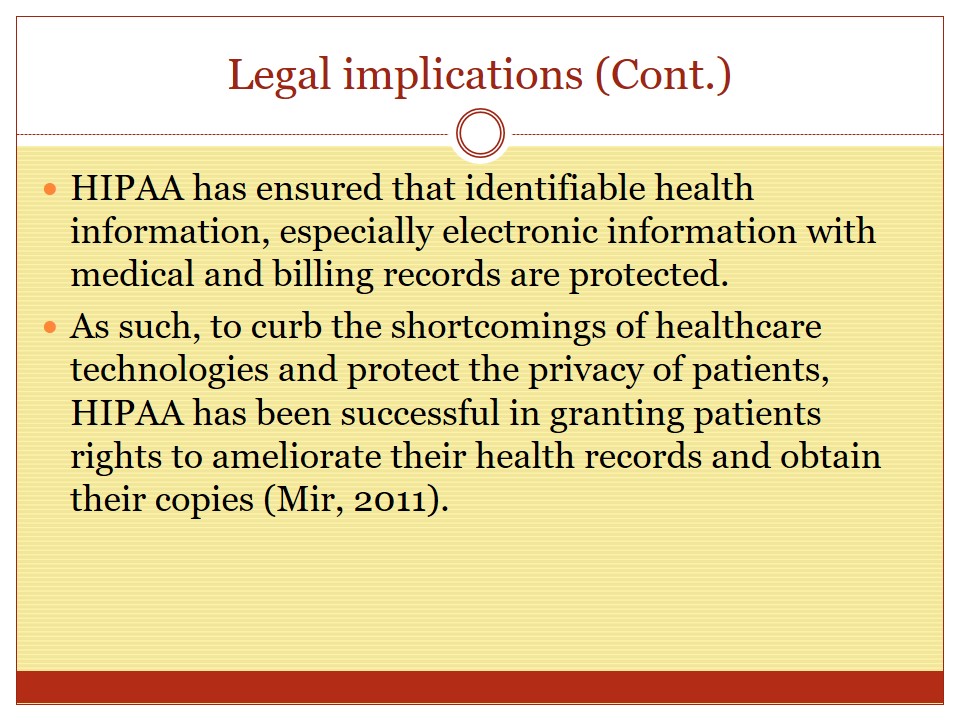
Conclusion
To sum up, inasmuch as healthcare technologies makes it easier for medical practitioners to carry out their tasks effectively and efficiently, lack of proper implementation and use of technological systems have greatly impacted on the health of patients and operations of healthcare providers.
It is also quite vivid from the literature that laws and regulations play a major part in managing and controlling emerging healthcare technologies.
As indicated, the impacts of the regulations on patients and medical practices are being seen in the manner in which the laws regulate the use of technology and provide protection and security to patients.
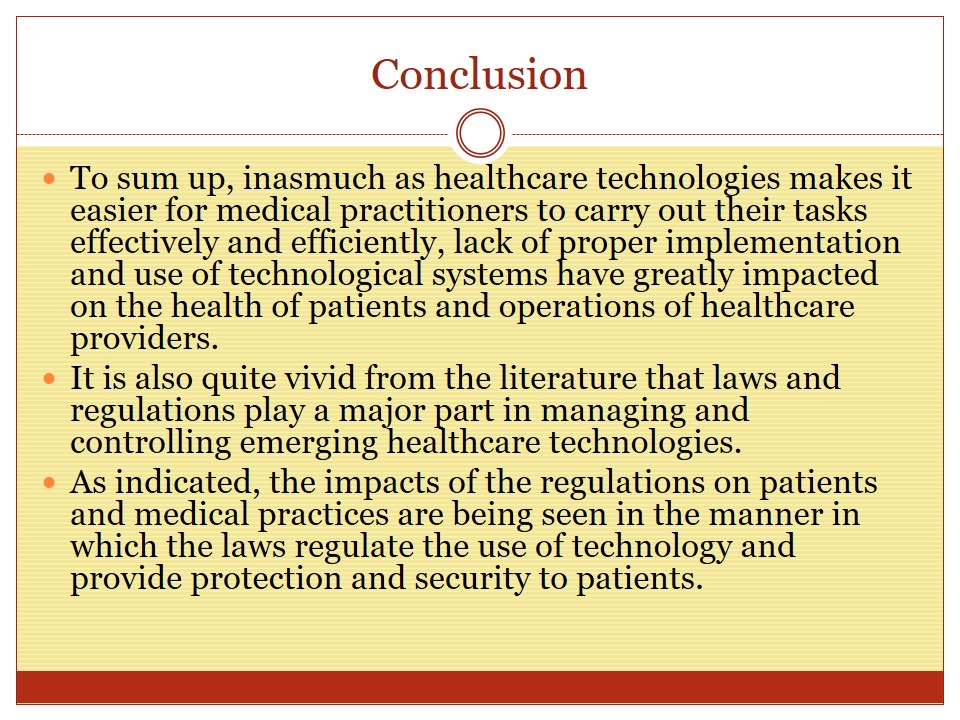
References
Brusco, J. (2011). Trending Toward Paperless. Association of Operating Room Nurses. AORN Journal,94(1), 13-18.
Mir, S. (2011). HIPAA Privacy Rule: Maintaining the Confidentiality of Medical Records, Part 2. Journal of Health Care Compliance,13(3), 35-44, 77-78.
Nicholson, S. (2011). Electronic Medical Records and You. PT in Motion,3(8), 46-47, 56.